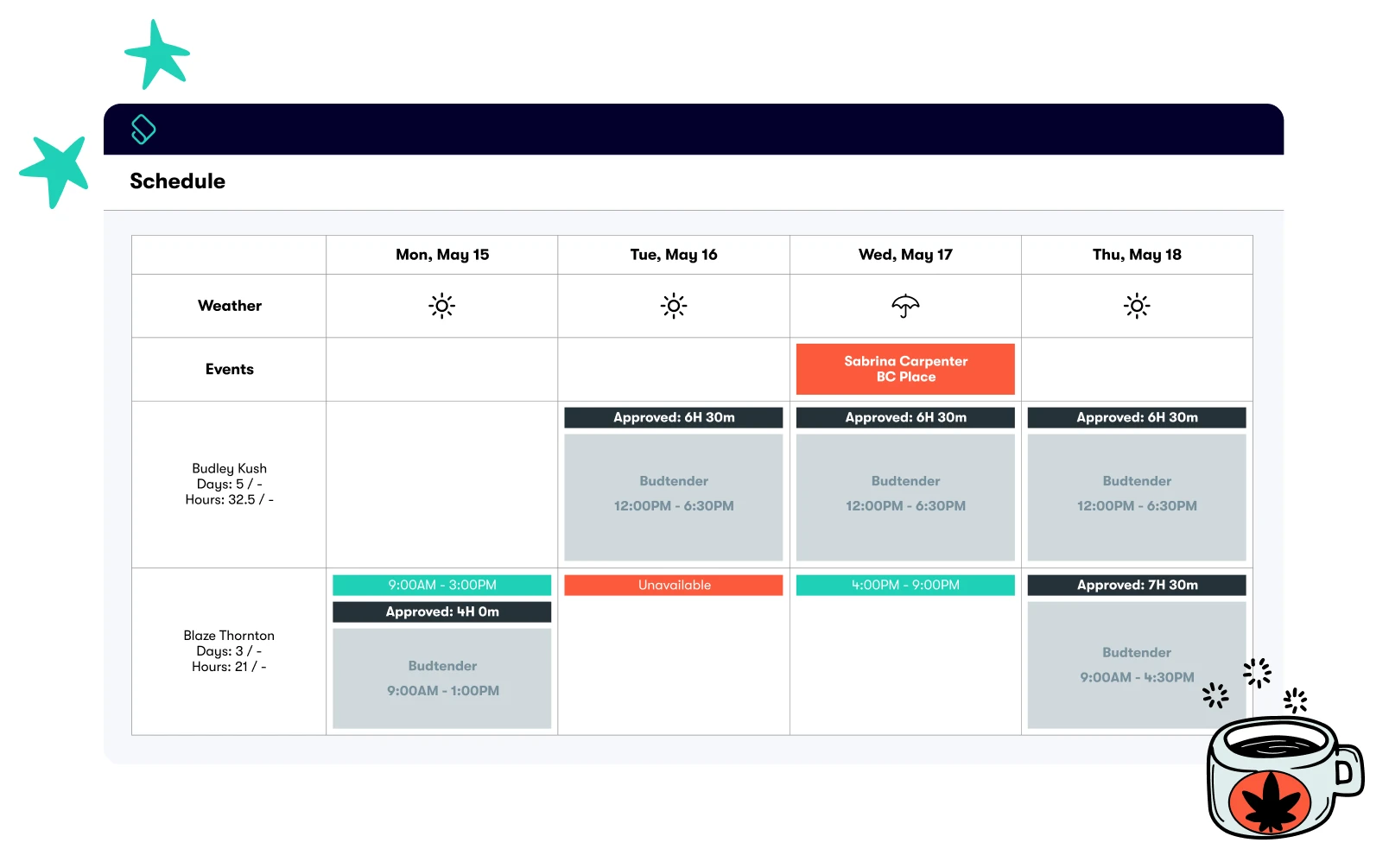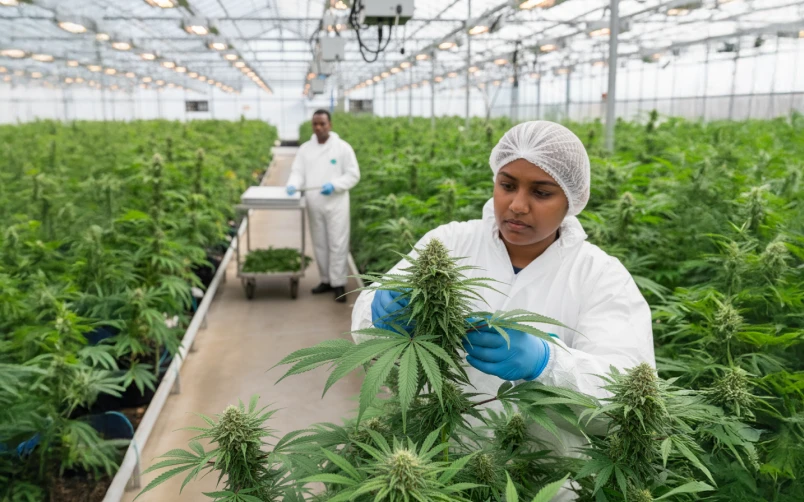California Lawmakers Approve Cannabis Excise Tax Pause Through 2028


In a move widely welcomed by California’s legal cannabis industry, state lawmakers have passed legislation to pause an impending cannabis excise tax hike until 2028. This legislation gives operators temporary relief as they struggle against inflated costs, tight margins, and illicit market competition.
What This New Cannabis Legislation Is About
On September 22, 2025, Governor Gavin Newsom signed Assembly Bill 564 (AB 564) into law, officially rolling back the retail cannabis excise tax from 19% to 15%, effective October 1, 2025. The tax will remain at 15% until June 30, 2028, unless further legislation intervenes.
The tax hike was originally scheduled under AB 195, which aimed to replace revenue from the now-repealed cultivation tax. Without AB 564, operators would have faced a 4% increase in the retail excise tax beginning in July 2025.
What is in AB 564?
According to LegiScan, AB 564 makes the following key changes:
- Excise tax remains at 15% from October 1, 2025, to June 30, 2028.
- Starting in 2028–2029, the California Department of Tax and Fee Administration (CDTFA) may adjust the excise tax rate (up to a cap of 19%) based on revenues that would have been generated by the eliminated cultivation tax.
- A formal tax analysis report is due by October 1, 2027, from the Department of Cannabis Control (DCC), CDTFA, and the Legislative Analyst’s Office.
- Unless renewed, the bill’s provisions sunset on January 1, 2029.
Governor Newsom emphasized that the bill is part of his administration’s effort to support the long-term stability of California’s licensed cannabis market, calling it a necessary step to level the playing field against the illicit market.

Broad Legislative Support
The bill received near-unanimous support at every stage of the legislative process. The Assembly Business & Professions Committee (15–0), the Assembly Revenue & Taxation Committee (6-0), and the Full Assembly (74–0) all provided unanimous support for the measure. The Senate only had one holdout, with a vote of 39–1.
Industry leaders have praised the bill for providing breathing room to operators already battling high regulatory costs, burdensome compliance requirements, and unlicensed competitors.
Why This Cannabis Tax Relief Matters
Without AB 564, the excise tax would have risen to 19% starting July 1, 2025. This move would have been devastating to legal businesses already operating on razor-thin margins, according to many.
California’s legal cannabis market has shrunk in recent years, with fewer than 1,300 licensed dispensaries operating statewide, and the illicit market still capturing more than 60% of total cannabis sales.
In Q4 of 2024, the state reported just $219 million in cannabis tax revenue. This is the lowest since 2020, when numbers dropped rapidly due to the pandemic, further highlighting the market's distress.
AB 564’s passage shows lawmakers now recognize that over-taxation fuels the black market, and a temporary rollback is necessary to keep legal businesses afloat.

What Cannabis Businesses Should Do Now
Cannabis owners and operators must see this for what it is — a reprieve. This tax pause is a gift, but it comes with a timer ticking away until it ends. By 2028, the rates could well begin to climb again. Legal cannabis business operators need to seize the moment and use this window to protect and expand their profit margins.
Here are five strategic moves to consider:
1. Get Leaner: Reduce Operational Waste
The fastest path to profit improvement is not always more sales. Focus on cost control, as well.
- Review Staffing: Look for avoidable overlaps, underperformance, and unnecessary overtime.
- Audit Utilities: Cultivation and processing costs can be lowered considerably by switching to LED lighting, making HVAC upgrades, and improving water recycling systems.
- Reduce Shrinkage: Tighten your standard operating procedures (SOPs) to minimize lost inventory or theft.
2. Data-Driven Product Mix Optimization
Do not settle for selling just what is popular. Make sure you are also selling a good mix of what is profitable, as well:
- Margin Reports: Run SKU-level margin reports to narrow down your products that return the highest profit margins. Train your budtenders to push sales in the direction of these products as much as possible.
- Bundle Product: Use bundling to increase your average order value (AOV) while offloading slower SKUs as part of the package.
- Price Adjustments: Adjust pricing (within local compliance limits) based on demand from consumers and margin thresholds.
3. Maximize Labor Efficiency
Labor is often the second-largest expense after the cost of goods sold (COGS). In an industry where every percent counts, you will want to make sure you are running your cannabis business with a labor efficiency that will be the envy of your competitors.
This is where KayaPush can help. Our workforce management platform helps cannabis operators save up to 3% in labor costs and 12+ hours per week on people management and payroll processing.
By automating scheduling, compliance, time tracking, and payroll, you can focus your team’s energy on growth rather than being mired down in administrative tasks.

4. Plan for Tax Reinstatement in 2028
Remember that this is merely a pause, not a permanent reduction.
- Model your profits & losses (P&L) with excise rates at 16%, 17%, 18%, and 19%.
- Develop “shock absorption” scenarios: How will you adjust pricing or costs when taxes rise again?
- Advocate with trade groups now for more predictable and equitable tax policies in 2028 and beyond.
5. Steal Market Share from the Illicit Market
It can be hard to compete with a market that is unregulated and therefore able to sell at a much lower price point. While the black market may thrive on price, legal cannabis businesses have the advantage of compliance and safety. Use these to set yourself up as the preferred choice.
- Educate customers on testing, dosing, and product safety.
- Offer small pack sizes for price-sensitive buyers.
- Launch loyalty programs to reward legal purchases.
- Partner with other licensed brands or microbusinesses to reduce overhead through shared services.
Final Thoughts
AB 564 is a temporary win, not a permanent solution. The legal industry now has a few years of tax relief to reduce costs, increase efficiency, capture legal market shares, and prepare for whatever comes in 2029.
Smart operators know the clock is ticking. Now is the time to reinvest in smarter systems and streamline operations. KayaPush helps cannabis businesses cut labor costs by up to 3% while staying compliant with California’s ever-changing labor laws. Schedule your demo today and start saving!


